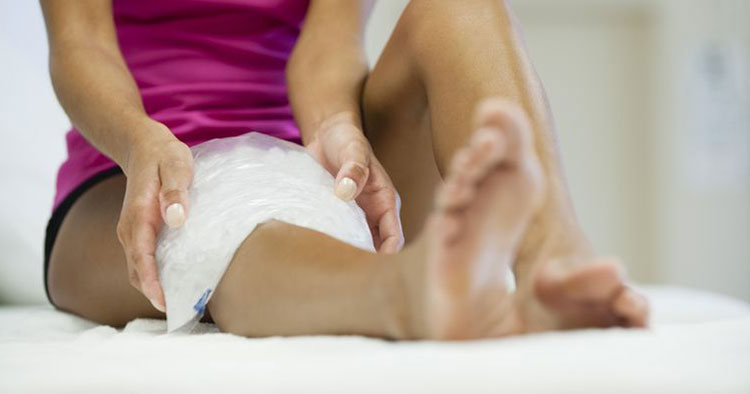Injury Rehabilitation and Training, Muscle Pain and Tendinopathy
Treatment for Pes Anserinus Tendinopathy
Addressing Underlying Risk Factors And Pathology The Key
Pes anserinus tendinopathy and pes anserine bursitis are conditions commonly associated with obesity and osteoarthritis (OA) of the knee. The condition is also recorded as being more common amongst females, considered most likely to be due to that fact that anatomically women have a wider pelvis which subsequently results in an increased angulation of the knee, with this angulation leading to more pressure in the pes anserinus area.
The bursitis (inflamed bursa) in pes anserine bursitis is not necessarily the primary pathology, in non-traumatic pes anserine bursitis (meaning a non-impact related bursitis where there hasn’t been a direct trauma to the inner knee area) the bursitis is frequently the result of other complications such as osteoarthritis, or biomechanical and loading issues.
Issues ranging from:
- Anatomical factors, like muscle imbalances
- Or training errors
Addressing any training errors, biomechanical risk factors as well as any existing underlying pathology is paramount when treating pes anserine tendinopathy and knee bursitis.
Pes Anserinus Tendionpathy Treatment Approach
Physiotherapy is a mainstay in the treatment of pes anserine tendinopathy and knee bursitis. Physiotherapy is a profession and not a treatment technique so your session with a physiotherapist may encompass many things. When treating knee bursitis it isn’t uncommon for the session to include some form of conditioning and biomechanical exercises, as well as joint and soft tissue mobility exercises including potentially some therapeutic passive therapies including soft tissue work and/or electrotherapy. As well exercise prescription, loading advice, passive treatment approaches to help stimulate a healing response guidance regarding the relevance of the following may also be offered:
- Rest: Relative rest specifically the avoidance of climbing or descending stairs where possible, as well as modification to training and/or workouts in an attempt to adjust and/or eliminate aggravating activities helping reduce the load to the knee and irritation to the pes anserinus area.
- Ice: Application of ice during the inflammatory phase of the pes anserinus tendinopathy and bursitis can help manage pain and may also help reduce local inflammation.
- Compression: An elastic compression bandage may help to reduce swelling if present and significant. However when applying compression care needs to be taken not to increase friction from excessive compression at the site of the bursa and inadvertently making things worse.
- Taping: Off loading taping, or compression taping using kinesio taping techniques can also be helpful in managing swelling and pain. Similar taping techniques may also be used in assisting a return to play during the later stages of an athletes rehabilitation process.
- Anti-inflammatory medication: The short term use of nonsteroidal anti-inflammatory medication orally, or applied topically to the site of pain may ease discomfort and reduce inflammation in the early inflammatory stages of pes anserinus bursitis.
- Corticosteroid Injections: As a second line of treatment, where less invasive options have yielded unsatisfactory results, an intra-bursal steroid injection may be considered. Ideally above conservative options have be fully explored first and any injection is still accompanied with loading and biomechanical changes, otherwise I feel there is a good chance that given time the condition will flare up again even if in the early stages the injection appears successful.
With appropriate treatment and loading changes many patients with pes anserinus tendinopathy will start to feel better within just a few weeks of the onset of injury. However, if despite treatment, pain and or limited function persists, then following orthopaedic consultation, surgical treatment may be considered but this in my experience at least is unlikely having personally never seen someone have surgery exclusively for an isolated pes anserine tendinopathy or pes anserine knee bursitis.
Disclaimer: Sydney Physio Clinic provides this information as an educational service and is not intended to serve as medical advice. Anyone seeking specific advice or assistance on Treatment for Pes Anserinus Tendinopathy should consult his or her physiotherapist, podiatrist or general practitioner.


